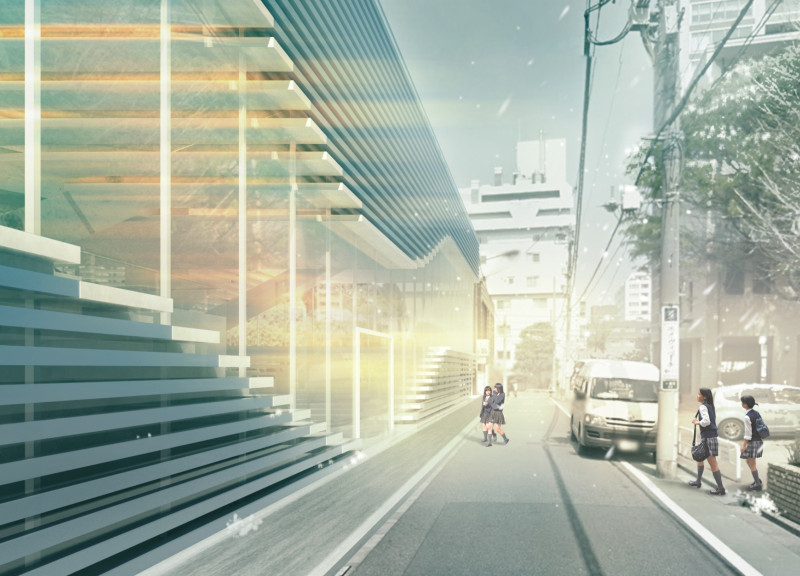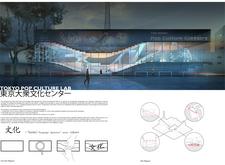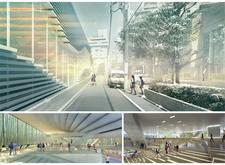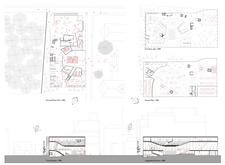5 key facts about this project
At its core, the Tokyo Pop Culture Lab represents a fusion of tradition and modernity, mirroring the eclectic character of Tokyo itself. The building is designed to accommodate diverse activities, including exhibitions, workshops, and collaborative projects, making it a versatile space that welcomes a wide range of visitors. Through its innovative approach, the project aims to cultivate a deeper appreciation for popular culture, bridging the gap between artistic expression and community involvement.
The architectural design is characterized by several important elements that contribute to its overall function and aesthetic appeal. The facade of the building features an intricate interplay of horizontal slats and extensive glass panels. This design choice creates a rhythmic visual pattern while allowing ample natural light to enter the spaces within. The transparency of the facade not only enhances the connection between the interior and exterior but also invites the public to engage with the activities occurring inside.
One of the distinctive aspects of the Tokyo Pop Culture Lab is its emphasis on creating an inviting entrance that encourages movement towards the building. The sweeping steps leading up to the main entry point serve as more than just architectural features; they are designed to foster social interactions and provide a sense of openness. This thoughtful approach to entrances and access points reflects the architects’ commitment to community engagement, making the space accessible to all.
Inside the facility, the spatial organization is designed to be fluid and adaptable. Multi-functional areas are strategically positioned to facilitate various programs, from exhibitions showcasing local artists to educational workshops. The open-plan interior allows for flexible configurations and easy reorganization, enabling users to tailor the space for specific events or activities. This adaptability is a crucial feature of the design, supporting the evolving needs of the community it serves.
Another significant feature of the Tokyo Pop Culture Lab is its use of a wave-like roof structure that not only adds visual interest but also symbolizes the fluidity of cultural exchange. The roof serves practical functions as well, providing shelter while enhancing the overall aesthetic of the building. By integrating this distinctive architectural approach, the project highlights how design can reflect cultural themes and ideas.
Materiality plays an essential role in the Tokyo Pop Culture Lab's architectural expression. The use of reinforced concrete serves as a strong backbone, offering structural integrity, while glass enriches the facade and interior with natural light. Steel is incorporated throughout the roof structure, leveraging its strength to form the building’s distinctive shape. Additionally, wood is utilized in specific interior elements, creating a warm atmosphere that connects with traditional Japanese architectural nuances.
The thoughtful integration of these materials not only contributes to the building's functionality but also enhances its overall sensory experience. The textured concrete and metal cladding create a tactile quality, ensuring that users feel a connection to the materials that encapsulate the space.
As an architectural project, the Tokyo Pop Culture Lab emphasizes the significance of creating spaces that facilitate interaction, learning, and collaboration. Its design celebrates the rich cultural landscape of Tokyo, offering a place where individuals can gather, explore, and express themselves creatively. The project’s unique approach to architecture serves as a vital component in fostering community engagement and cultural enrichment.
For a deeper understanding of the design and its innovative features, readers are encouraged to explore the architectural plans, sections, and overall designs that offer detailed insights into the project. Engaging with these architectural ideas will provide a comprehensive view of how the Tokyo Pop Culture Lab stands as a meaningful contribution to both the dialogue of contemporary architecture and the cultural discourse within Tokyo.


























